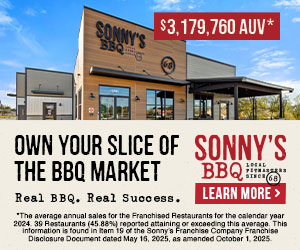Building Success: Identifying Key Factors in Establishing the Ideal Franchise Model

Having worked my way from an entry-level position to a leadership role in restaurant operations, I’ve developed a deep understanding of what makes a successful franchise model. At its core, a franchise must meet the unique demands of its market while providing franchisees with the tools to succeed. Across the restaurant industry, this balance between adaptability, operational efficiency, and customer satisfaction is critical to long-term success.
One of the key trends we’ve observed in the industry is the growing importance of offering multiple franchise models to suit varying markets. Whether catering to fast-paced, high-traffic areas with grab-and-go options or offering a more traditional dine-in experience, flexibility in how a restaurant is designed and operated is essential. Successful franchise brands allow their operators to tailor the customer experience based on local preferences while maintaining consistent brand standards.
The power of choice in franchise models
As markets and customer behaviors evolve, franchise systems that offer multiple models provide a distinct competitive advantage. Entrepreneurs entering the food service industry can benefit from choosing a model that best fits their local environment. For example, urban areas with a fast-paced lifestyle might favor smaller, streamlined take-out or drive-thru formats, while suburban or rural areas may have stronger demand for full-service, dine-in experiences.
This flexibility not only allows restaurant brands to expand into new markets but also helps franchisees find a more customized path to success. By empowering operators to align with local customer demands, the franchise system becomes more resilient and responsive to market shifts.
Resilience and adaptability in economic downturns
One major benefit of offering diverse franchise formats is the ability to weather economic uncertainty. In times of economic downturn, customers tend to gravitate toward affordable, comforting food options. Quick-service models that emphasize convenience and value often thrive in these environments, allowing franchisees to capture demand even when discretionary spending is down.
Conversely, when economic conditions improve, dine-in and full-service locations tend to see stronger performance as consumers are more willing to spend time and money on leisurely dining experiences. This adaptability within a franchise system allows operators to pivot quickly to meet shifting consumer demands, providing long-term stability regardless of the economic climate.
Accessibility, affordability, and operational efficiency
An essential factor in the success of a franchise brand is ensuring that each model is designed for both profitability and ease of operation. As prospective franchisees evaluate their options, they often look for business models that align with their investment capabilities and operational preferences. Brands that offer entry points for a range of budgets and market conditions tend to be more appealing to entrepreneurs.
For example, lower-cost models like kiosk or food-truck formats can be highly effective in certain urban or event-driven environments, providing a quick and affordable way for franchisees to enter the market. On the other hand, larger full-service models may require a higher initial investment but offer greater revenue potential in markets where customers value a more immersive dining experience.
By offering a variety of options, restaurant franchises can appeal to a broader range of operators, making it easier for entrepreneurs to get started and succeed. Additionally, a well-designed franchise system ensures that each model is optimized for efficiency, reducing operational complexity and increasing profitability for franchisees.
The future of restaurant franchise models
As consumer preferences continue to shift, the ability to offer multiple, adaptable franchise models will be key to sustaining growth in the restaurant industry. The brands that succeed will be those that listen to their customers, understand local market conditions, and give their franchisees the flexibility to meet those needs.
Franchise operators who prioritize this balance between customer demand and operational efficiency are well-positioned to thrive, regardless of whether they are operating a small grab-and-go location or a larger dine-in restaurant. As the restaurant industry evolves, the power of choice in franchise models will remain a cornerstone of success.
Kaci Radochonski is the VP of operations of Pop’s Italian Beef & Sausage.
Share this Feature
Recommended Reading:
| ADVERTISE | SPONSORED CONTENT |
FRANCHISE TOPICS
- Multi-Unit Franchising
- Get Started in Franchising
- Franchise Growth
- Franchise Operations
- Open New Units
- Franchise Leadership
- Franchise Marketing
- Technology
- Franchise Law
- Franchise Awards
- Franchise Rankings
- Franchise Trends
- Franchise Development
- Featured Franchise Stories
| ADVERTISE | SPONSORED CONTENT |








 The franchise listed above are not related to or endorsed by Franchise Update or Franchise Update Media Group. We are not engaged in, supporting, or endorsing any specific franchise, business opportunity, company or individual. No statement in this site is to be construed as a recommendation. We encourage prospective franchise buyers to perform extensive due diligence when considering a franchise opportunity.
The franchise listed above are not related to or endorsed by Franchise Update or Franchise Update Media Group. We are not engaged in, supporting, or endorsing any specific franchise, business opportunity, company or individual. No statement in this site is to be construed as a recommendation. We encourage prospective franchise buyers to perform extensive due diligence when considering a franchise opportunity.